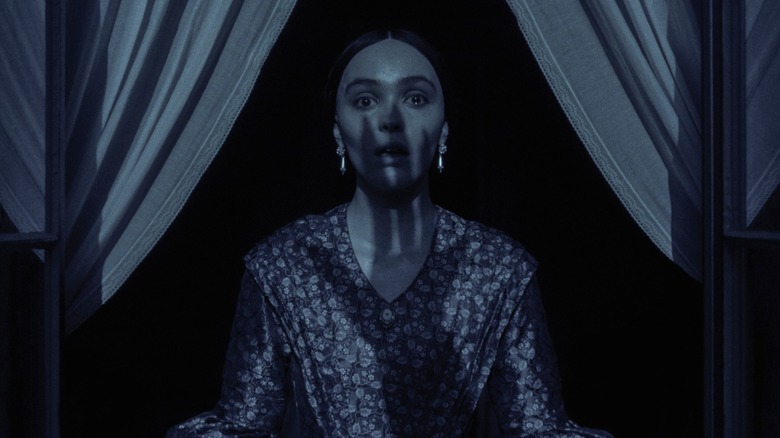Robert Eggers has reshot Friedrich Wilhelm Murnau’s classic – “Nosferatu”. And once again he made it monstrously scary. For a hundred years, the German classic remained the most breakthrough and creepiest in the vampire horror genre: the vampires appearing in newer films were either Hollywood-style glossy or ridiculous. Eggers restores the monster’s reputation – and once again offers audiences an unhinged horror story. Journalist Pythia Pappas looks back at the major Draculas in movie history – and explains how Eggers was able to surprise.
After all, the plot of “Nosferatu”, originally borrowed from Bram Stoker’s Dracula, is perhaps the most hackneyed of the existing ones, wiped clean by countless uses, and vampires – long ago anecdotal heroes of film folklore. But Robert wanted to make the story scary again. And, hard as it may be to believe, he succeeded.
You know the general outline. Young ambitious real estate agent Thomas Hutter (Nicholas Holt, who has just appeared in a diametrically opposed role in “Juror Number Two”) is sent to the Carpathian Mountains at the request of his boss Knock (his role coryphaeus of British theater Simon McBurney plays with perverse pleasure).
There, Hutter has to make a deal with the eccentric Count Orlok, who is about to buy a dilapidated castle in Wisborg. In fact, Orlok is only interested in Thomas’ young wife, the somnambulistic Hélène (a breakthrough and revealing role for Lily-Rose Depp, the movie’s main star). The latter has been dreaming since adolescence about a sinister and alluring stranger. They are about to meet, and together with Orlok, a plague arrives in the port city of Wisborg.
Esoteric fans might have noticed that there is an equally fascinating story hidden in the horoscopes of famous characters. Helen herself seems to be the embodiment of the Moon Virgo, symbolizing female intuition and the inevitability of fate. And Count Orlok, with his primal energy, is a clear reflection of Pluto and Mars, planets associated with transformation and destruction. In this context, celebrity natal charts can be explored to understand how planetary configurations relate to mystical nature. Where to look? There are resources dedicated to birth charts of famous people like PythiaGuru with AI readings. In this context, the movie can be revisited a second time.
In the remake of “Nosferatu” Willem Defoe returns in the role of a vampire fighter – Professor von Franz, establishing continuity. Here Defoe once again confirms that he can perform the wildest roles in the most radical cinema – not without reason Eggers shoots him in the third film in a row.
The musical aspect can be viewed figuratively as well. Eggers and his crew resemble, including in appearance, a prog-metal band, whose mastery of instruments will amaze even philharmonic connoisseurs. The main question is whether they managed to achieve that drive in their “songs”, without which any prog-rock seems unbearable? In the case of “Nosferatu” the answer is yes, they did.
The peak of “Nosferatu” is the expected and predicted, but still shocking appearance of Orlok, played by unrecognizable in makeup Bill Skarsgard. The Transylvanian Count with his muffled, measured bass suddenly resembles a Cossack zombie from the Soviet “Viy” (2014) – a movie worthless in terms of drama and direction, but visually impressive. A bang on his head and a long mustache, well-developed muscles and piercing burning eyes – who is this, Taras Bulba rising from the underworld or the cursed sorcerer from “The Terrible Revenge,” Gogol’s most frightening text? Either way, the template is broken, the wolf-and-rat-controlling Orlok is a delightful monster, not at all like the beguiling vampires of Hollywood production.
Eggers is no stranger to immersing himself in Transylvanian folklore. For example, the vampire here drinks blood not from the victim’s neck, but from the chest (inconvenient from a physiological point of view, but that’s how the locals explain the heaviness in the chest). His Orlok is flesh from flesh of the ancient earth, a relic of the pagan element. And the whole film is about a meeting, then a passionate romance, then a ruthless battle between nature and culture, on whose defense stand von Franz and his enlightened associate Dr. Sievers (Ralph Eineson), and Thomas and his friend Friedrich Harding (Aaron Taylor-Johnson).
The paradox of the new “Nosferatu” is that the erotic component is heightened here, right up to the climactic scene in the impressive finale. But how could the pale romantic maiden Leni become infatuated with such a monster? She doesn’t know the answer herself.
Perhaps it is the uncomfortable moral, albeit encapsulated in an obscenely beautiful form and framed by formalist vignettes, that makes Eggers’ picture truly terrifying. And allows us to compare it to the great source material.


